No products in the cart.
NEWS
Growing an Italian Kitchen Garden: Essential Vegetables and Herbs
Picture a garden bursting with the vibrant colors of sun-ripened tomatoes, the lush green of aromatic herbs, and the rich hues of peppers and eggplant – a true Italian orto, or kitchen garden. When contemplating creating your own edible paradise, drawing inspiration from Italy offers a magnificent starting point. Renowned globally for its exquisite and flavorful cuisine, Italy’s culinary mastery hinges significantly on the unparalleled quality of its fresh, local produce.
This deep connection between the land and the table is no accident. Italy boasts a diverse tapestry of soils and unique microclimates, fostering conditions where specific food crops not only thrive but develop incredible depth of flavor. Many varieties central to traditional Italian cooking have been cultivated for centuries, forming the very foundation of the country’s distinctive tastes and textures. As a home gardener, selecting these prized Italian vegetables and herbs allows you to cultivate a piece of this rich heritage, bringing the authentic taste of Italy directly to your own backyard or balcony. Growing these classic ingredients transforms simple meals into culinary experiences, elevating your Italian-inspired dishes to new heights.
We’ve compiled a guide to some of the most flavorful and rewarding Italian vegetables and herbs you can easily grow, providing you with a little taste of Italia just steps from your kitchen.
Essential Italian Vegetables & Herbs for Your Garden
San Marzano Tomatoes: The King of the Sauce
Known affectionately as the gold standard for tomato sauce, the San Marzano tomato is more than just a name; it’s a designation tied to a specific region near Naples, Italy, where these exceptional plum tomatoes reach their peak.
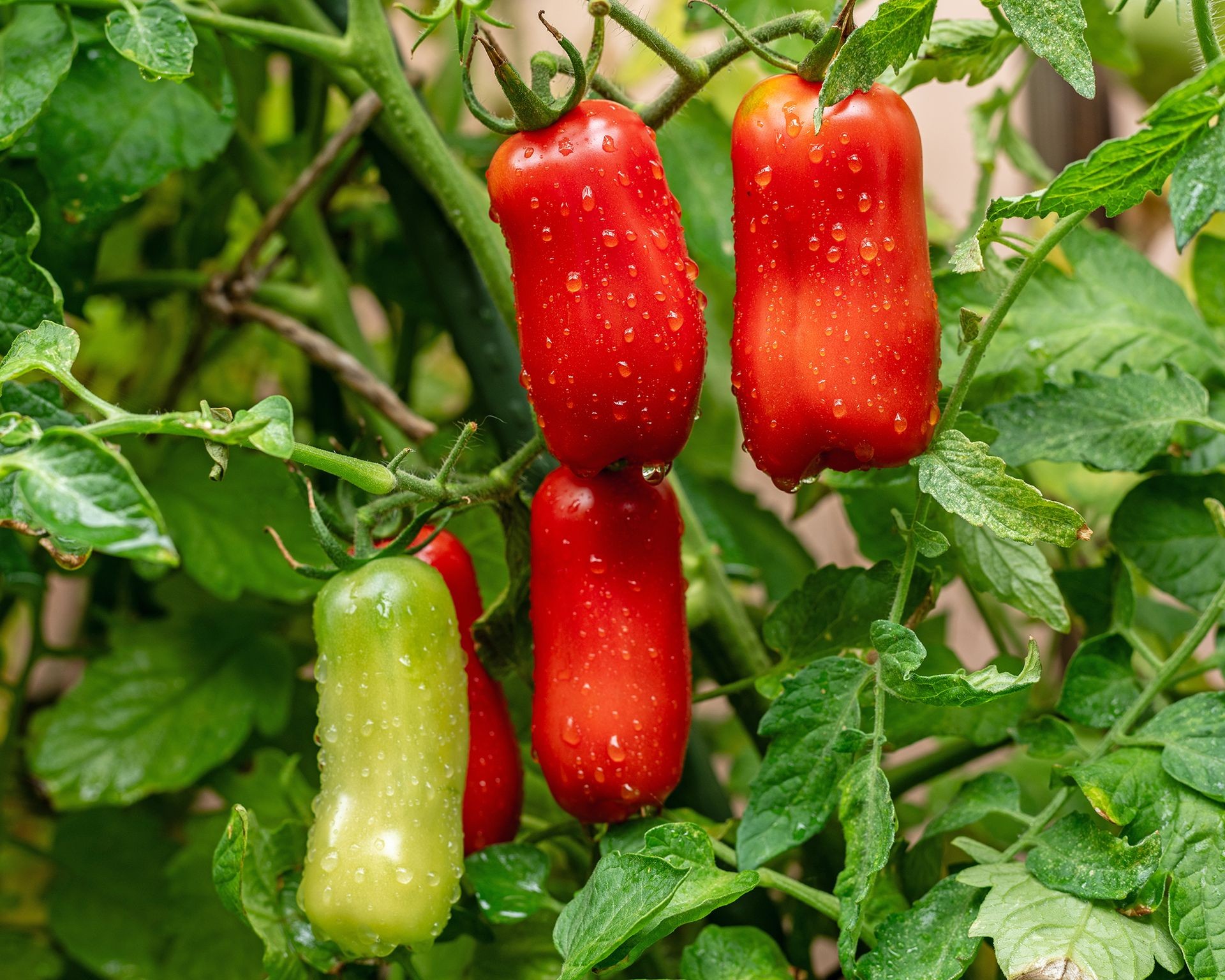 Ripe San Marzano tomatoes growing on a vine, ready for harvest
Ripe San Marzano tomatoes growing on a vine, ready for harvest
Characterized by their dense, meaty flesh, minimal seeds, and a perfectly balanced sweet flavor with just a hint of acidity, San Marzanos are unparalleled for sauces, canning, and drying. These are indeterminate plants, meaning they continue to grow and produce fruit throughout the season, often reaching impressive heights of up to 8 feet (2m).
Cultivating authentic San Marzano tomatoes requires attention to soil. They flourish in rich, well-draining soil generously amended with organic material. Begin seeds indoors approximately eight weeks before your area’s last expected frost. Once seedlings develop several sets of true leaves, harden them off gradually before transplanting them into their final garden location. With proper care, you can typically expect to begin harvesting these prized fruits within 75-90 days. If San Marzanos are difficult to find, a similar plum variety can serve as a good substitute.
Marconi Peppers: Sweet & Savory Versatility
Peppers are indispensable in Italian cooking, appearing in countless soups, stews, sauces, and roasted dishes. While Italy offers a range of fantastic peppers, from the fiery Piccante Calabrese to the substantial Corno di Toro, the Marconi stands out as a superb sweet variety.
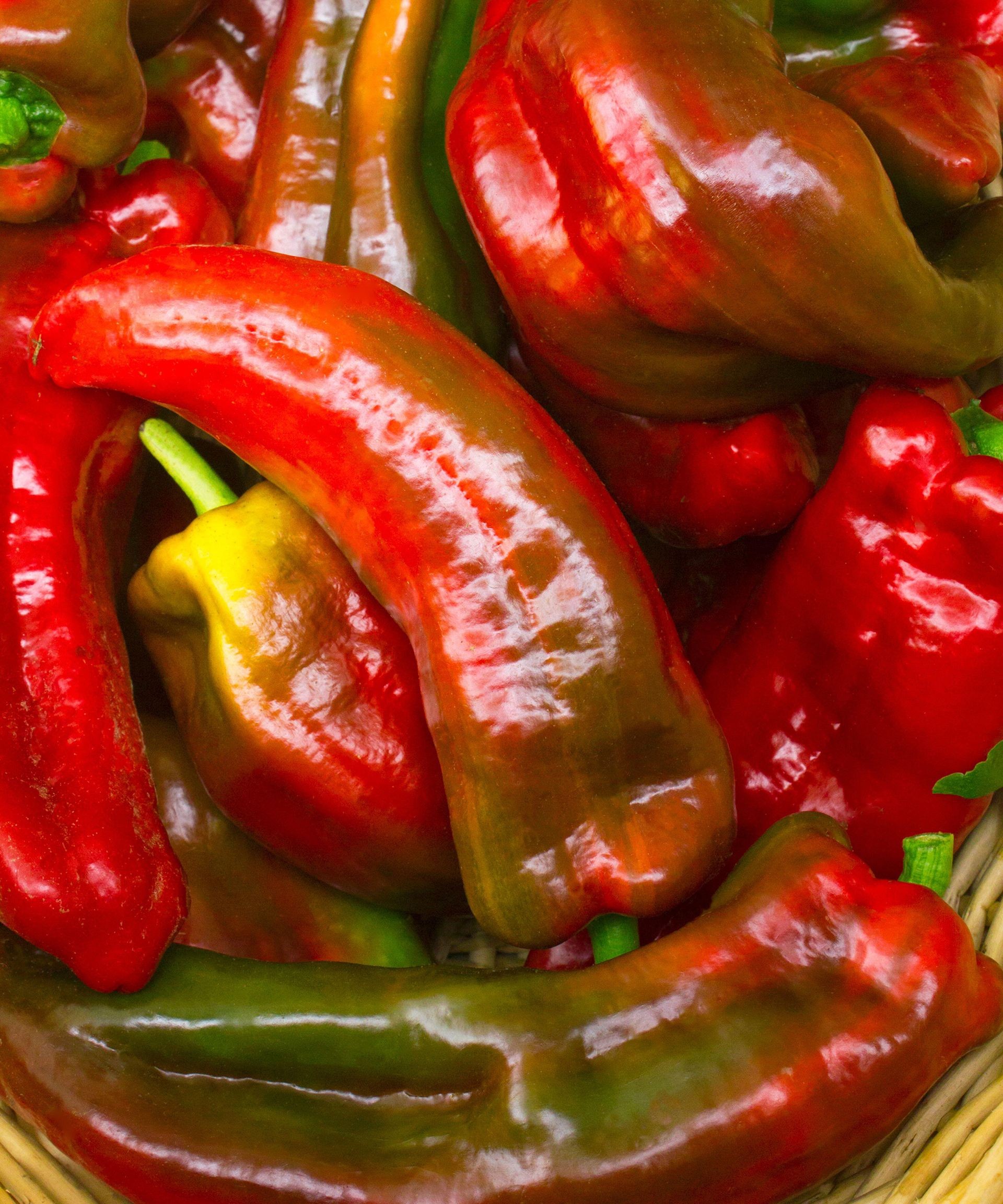 Basket overflowing with freshly harvested red and yellow Marconi peppers
Basket overflowing with freshly harvested red and yellow Marconi peppers
These substantial peppers, often growing up to a foot long (30cm), boast thick, rich flesh with a delightful smoky-sweet flavor. This makes them particularly well-suited for grilling, roasting, or incorporating into classic sauces like Arrabbiata.
Marconi pepper plants are prolific producers, typically yielding fruit around 70 days after planting and continuing until the first hard frost. For optimal growth, ensure they are planted in a full sun location and receive consistent moisture without becoming waterlogged.
Costata Romanesco Zucchini: Ribbed Heirloom Beauty
Squash, both summer and winter varieties, features prominently in seasonal Italian cuisine. Summer squashes like zucchini take center stage during the warmer months due to their versatility. Zucchini is enjoyed raw, roasted, grilled, and added to countless soups and stews.
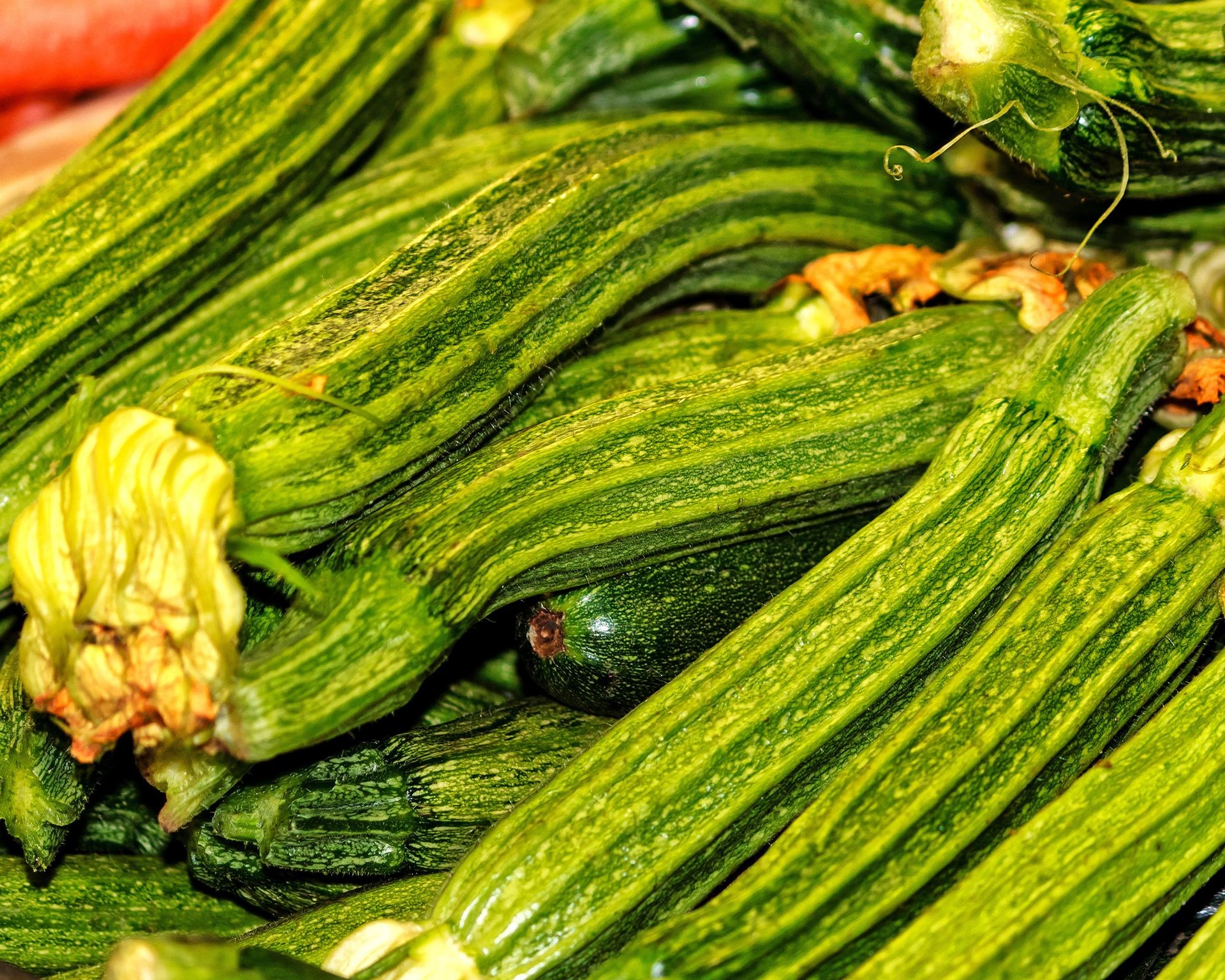 Unique ribbed texture visible on harvested Costata Romanesco zucchini squash
Unique ribbed texture visible on harvested Costata Romanesco zucchini squash
The Costata Romanesco is a cherished heirloom variety instantly recognizable by its deeply green, distinctly ribbed skin. Beneath this lies creamy white flesh celebrated for its delicate, slightly nutty flavor, superior to many common zucchini types. An added bonus? The large male flowers are edible and considered a delicacy, perfect for deep frying, stuffing, or adding fresh to salads.
To grow successful Costata Romanesco plants, provide fertile, well-draining soil and a spot in full sun. This variety is semi-vining, so ensure it has ample space to spread or provide some support. Fruits are ready for harvest relatively quickly, often within 60 days of planting, and production continues throughout the season.
Arugula (Rocket): Peppery Punch
Arugula, often called rocket, with its slender, sometimes delicately frilled leaves, is a cornerstone of Italian salads, pestos, and pasta dishes. Eaten raw or lightly sautéed, its signature peppery flavor provides a zesty counterpoint that enhances other ingredients.
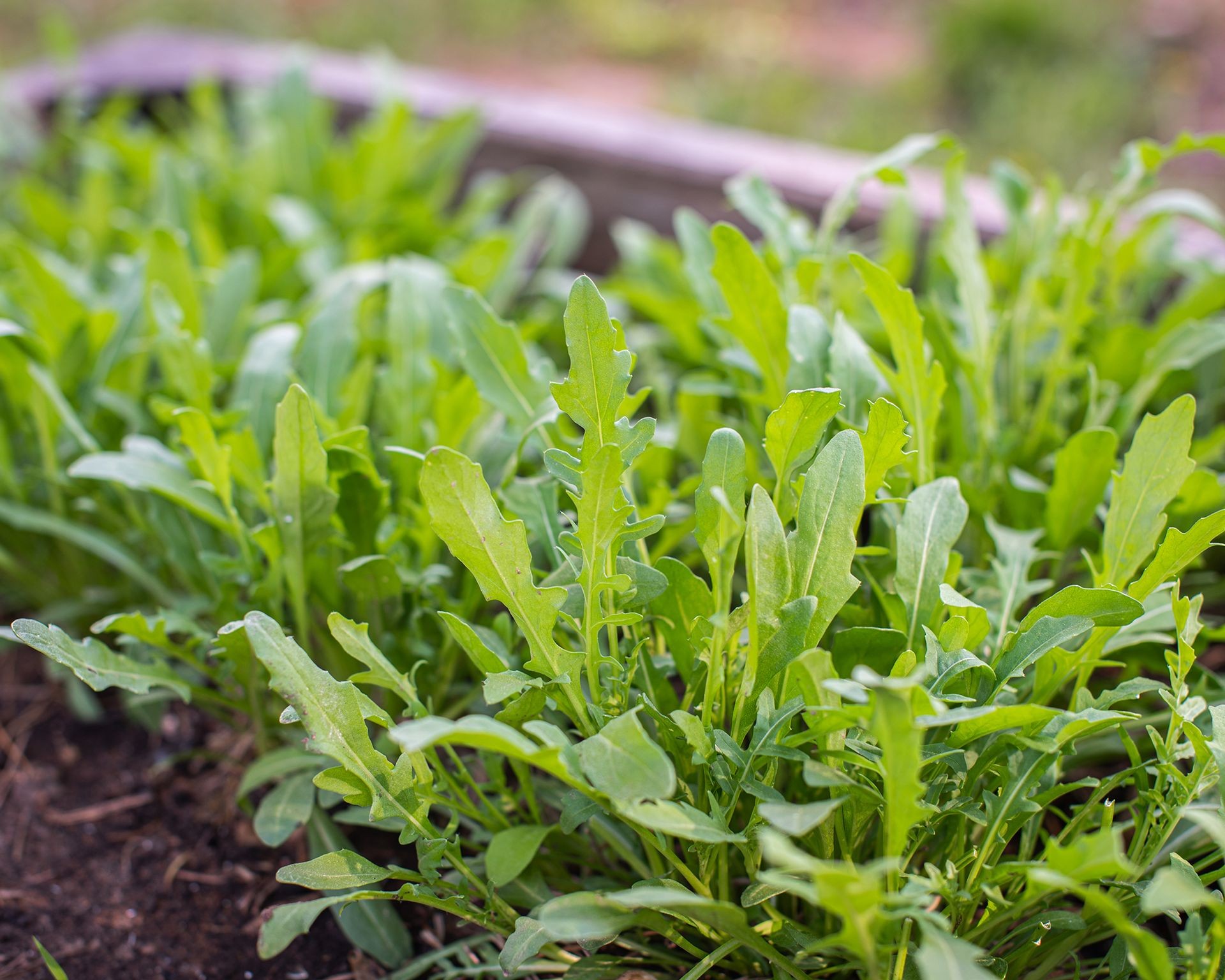 Lush Arugula Sicilian rocket growing in a terracotta container
Lush Arugula Sicilian rocket growing in a terracotta container
Belonging to the mustard family explains its distinctive zing. The taste profile combines notes of black pepper with a subtle citrusy finish, creating a unique sensation on the palate.
Growing arugula from seed is wonderfully straightforward. As a cool-season crop, it prefers milder temperatures and can be sown directly into the garden bed as soon as the soil is workable in early spring. Keep the area weed-free and harvest the outer leaves when they are young and tender. Allowing plants to get too old or grow in hot weather can result in leaves developing a stronger, sometimes bitter taste.
Fagiolina del Trasimeno: Creamy Italian Beans
These enchanting small beans hail from the area surrounding Lake Trasimeno in Umbria, Italy. Fagiolina del Trasimeno is a type of black-eyed pea, though they appear in a beautiful spectrum of colors ranging from creamy white and tan to rusty red and black.
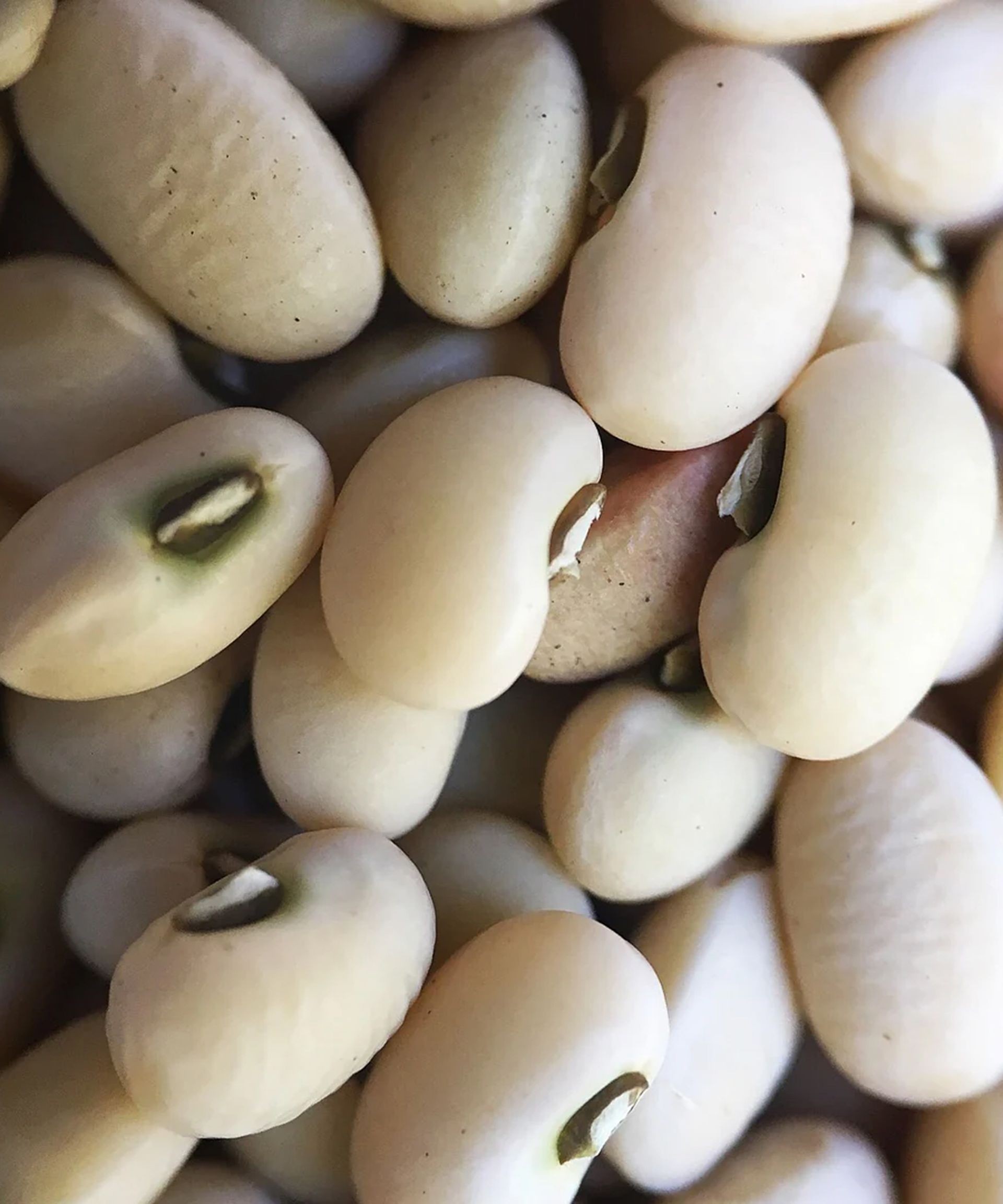 Close-up of Fagiolina del Trasimeno beans displaying their varied colors
Close-up of Fagiolina del Trasimeno beans displaying their varied colors
One of their most appealing characteristics is that they typically do not require soaking before cooking, yielding a wonderfully creamy texture perfect for traditional dishes.
Directly sow these beans in fertile, well-draining soil receiving full sun after all risk of frost has passed. These are vining plants that benefit significantly from support structures like trellises, allowing them to climb. You can anticipate harvesting the first mature beans approximately 80 days after planting. Regular harvesting, perhaps every couple of days, encourages continued production. Their quick cooking time makes them ideal for dishes like risotto, where they can cook alongside the rice.
Cima di Rapa (Broccoli Rabe/Rapini): Zesty Greens
Developed from the leafy tops of turnips, Cima di Rapa Quarantina is also widely known as rapini or broccoli rabe. This versatile green offers a robust, slightly bitter, and zesty flavor profile that is equally delicious eaten raw or cooked. All parts of the plant are edible – the tender flower heads, the leaves, and the stems.
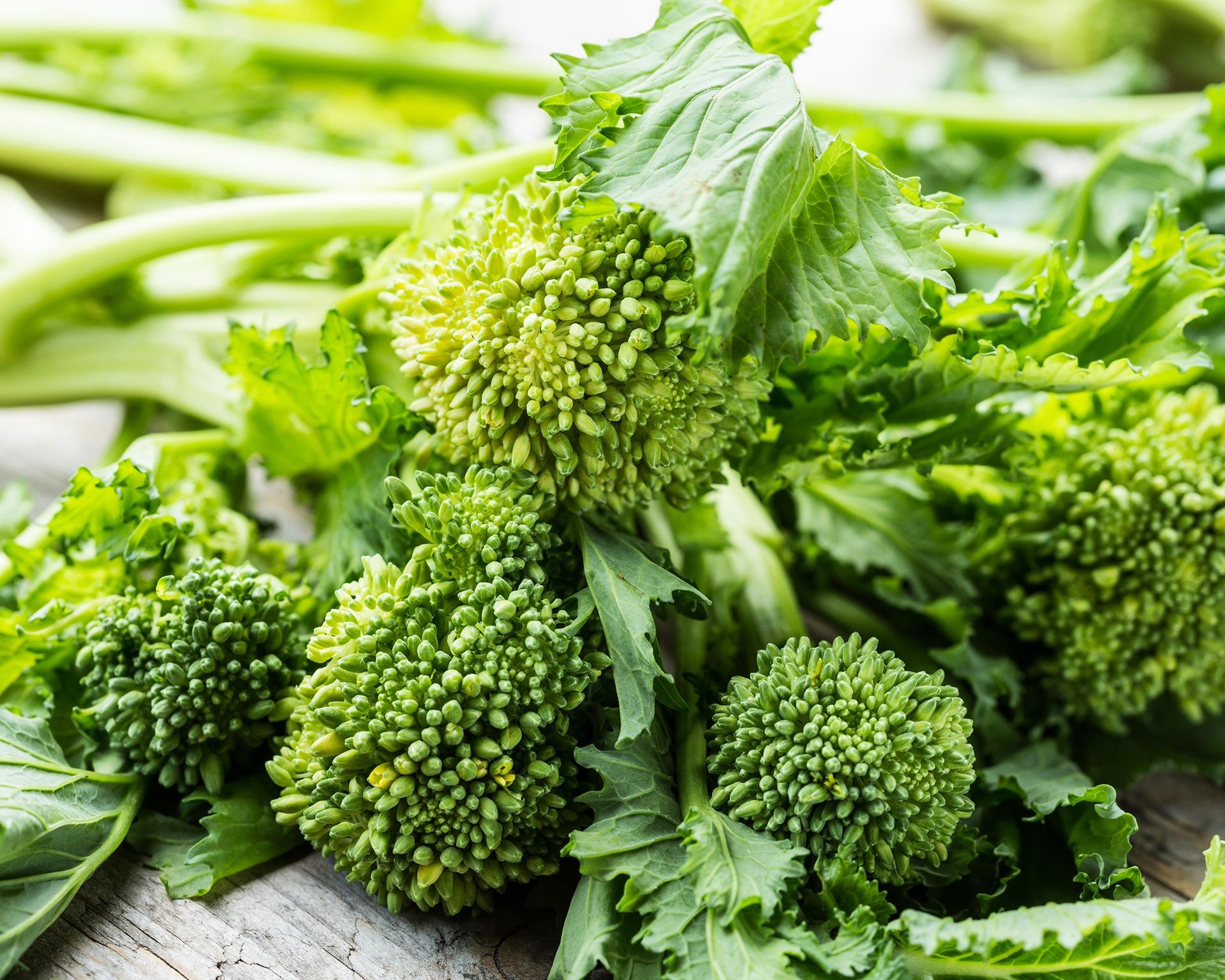 Bunches of freshly harvested Cima di Rapa (Broccoli Rabe) showing leaves, stems, and small florets
Bunches of freshly harvested Cima di Rapa (Broccoli Rabe) showing leaves, stems, and small florets
Like arugula, this is another excellent cool-season crop. Plant it early in spring for a quick harvest, or sow a second crop towards the end of summer for a fall bounty. One of its most attractive features is its rapid growth; this delightful cousin of broccoli can be ready for harvest in as little as 28 days.
The culinary applications for Cima di Rapa are virtually endless. It makes a fantastic side dish, roasted or steamed, and the stems and leaves add wonderful flavor and texture to stir-fries, soups, stews, pasta dishes, and salads. Its bold taste pairs exceptionally well with citrus and garlic.
Nadia Eggplant: Classic Italian Staple
No discussion of essential Italian garden ingredients is complete without the humble yet iconic eggplant. Dishes like Eggplant Parmigiana have cemented its place in the pantheon of classic Italian comfort food.
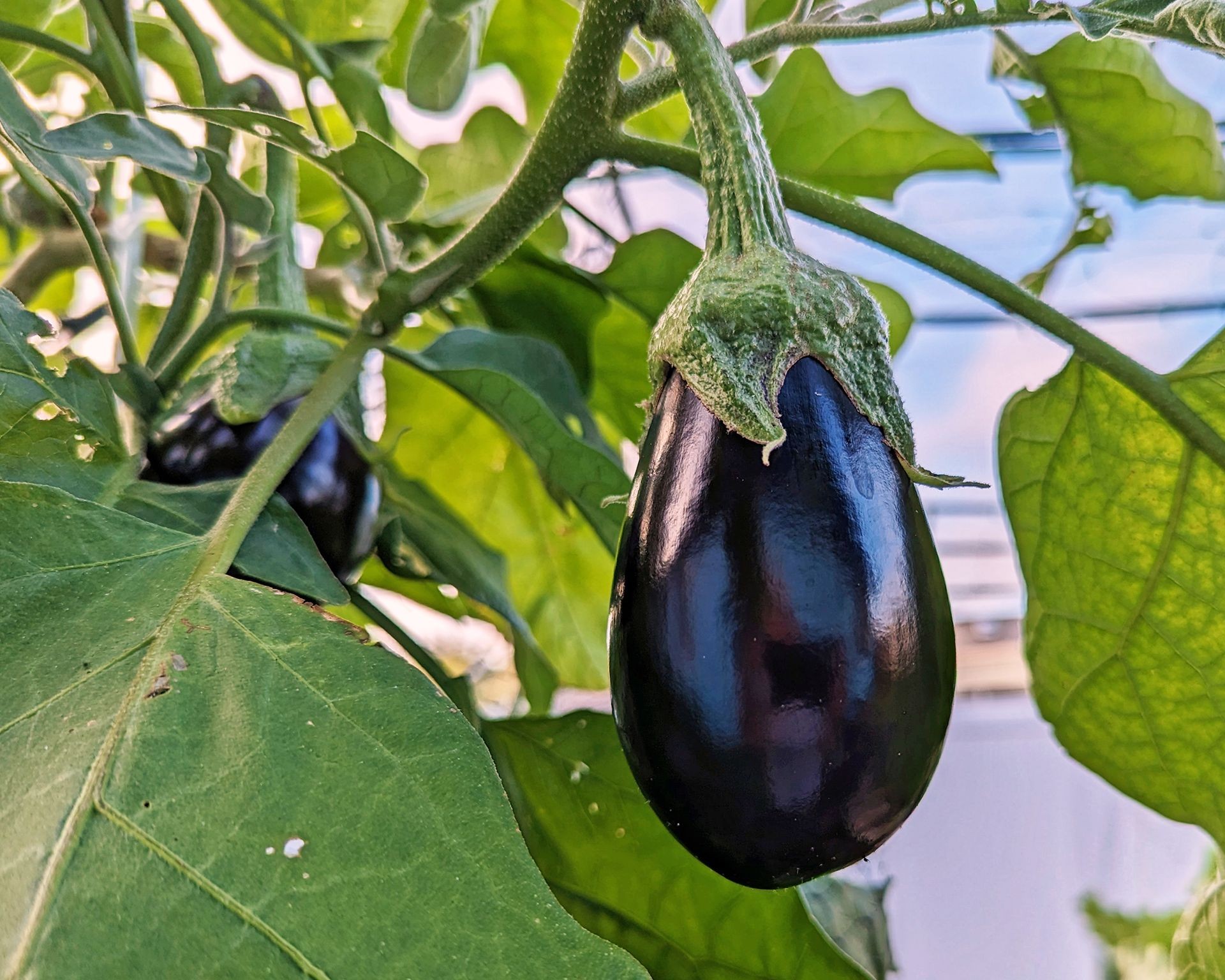 Dark purple Nadia eggplant growing on a plant, ready for picking
Dark purple Nadia eggplant growing on a plant, ready for picking
The Nadia eggplant is a traditional Italian variety, typically presenting as a glossy, uniform black fruit with a slightly rounded shape. These eggplants are prized for their creamy white flesh and sweet flavor, usually free from the bitterness sometimes found in other varieties.
It’s generally best to start eggplant plants indoors several weeks before the last expected frost and transplant them into the garden when the weather is consistently warm. Fruits are usually ready for harvest around 67 days after transplanting. Harvest them as soon as they develop their deep color and shiny skin; older fruits can become less sweet and potentially bitter. While Nadia eggplants can be eaten raw in some preparations, their sweet flavor and creamy texture truly shine when cooked in a variety of dishes.
The Essential Italian Herb Garden
Herbs are the soul of Italian cooking, providing the aromatic depth and vibrant finishing touches that make dishes truly sing. To authentically replicate Italian culinary styles at home, cultivating a dedicated Italian herb garden is not just recommended, it’s essential.
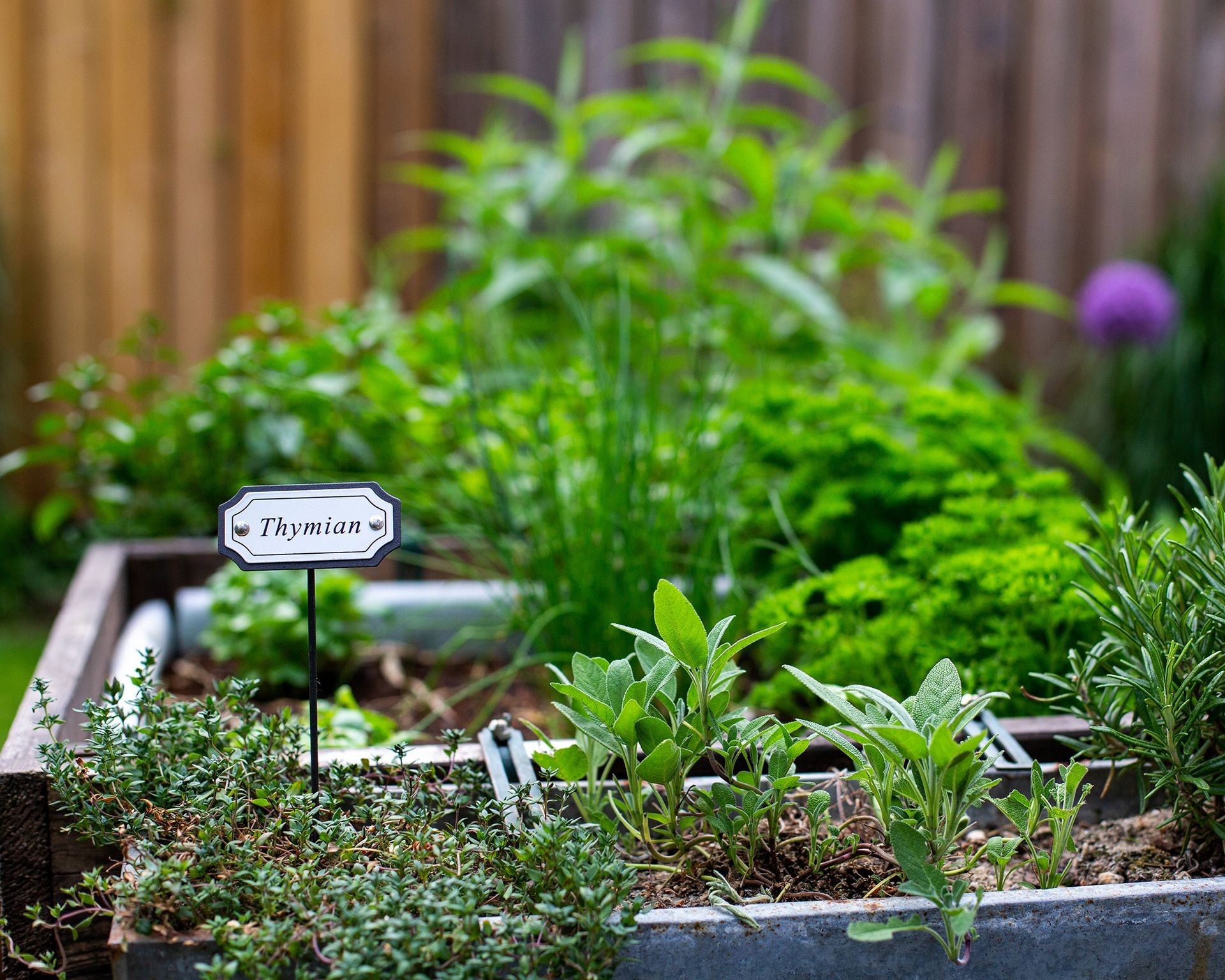 A vibrant collection of common Italian herbs growing in a garden bed
A vibrant collection of common Italian herbs growing in a garden bed
Fortunately, many essential Italian herbs are easy to grow and offer additional benefits in the garden, serving as natural companion plants that can help deter common pests from your vegetables. The most frequently used herbs in traditional Italian cuisine include oregano, basil, parsley, and thyme. All of these can be readily grown from seed or purchased as small plants and thrive in sunny locations.
- Oregano: Known for its pungent aroma and robust flavor, oregano flowers are also a magnet for beneficial pollinators like bees.
- Basil: A cornerstone herb with a delicate, slightly sweet flavor often described as having notes of liquorice or clove. Perfect in Caprese or pesto.
- Parsley: Adds essential freshness and a burst of color when added just before serving. Italian flat-leaf parsley is particularly favored.
- Thyme: Offers an earthy, slightly minty taste and pronounced scent, a classic pairing with roasted meats, particularly chicken and fish.
Growing these aromatic powerhouses ensures you always have fresh, flavorful herbs on hand to elevate your Italian cooking.
Bringing Italy Home Through Your Garden
Cultivating these specific Italian vegetables and herbs offers a direct path to experiencing the authentic flavors and textures that define Italy’s celebrated cuisine. From the foundational San Marzano tomato sauce to the bright zest of arugula and the aromatic complexity of fresh herbs, each plant brings a piece of Italy to your table. Embracing these varieties connects you to centuries of agricultural and culinary tradition, making your garden not just a source of food, but a bridge to a rich cultural heritage.
Ready to start your own Italian kitchen garden adventure? Explore the possibilities and find the seeds, supplies, and knowledge you need for a bountiful harvest right here at Biogarden.asia. Share your journey and discoveries with us!



